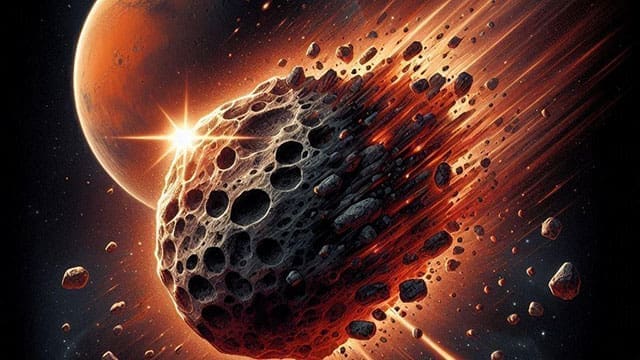How new research is changing our understanding of Martian meteorites and what they tell us about Mars’ past
Mars, the enigmatic Red Planet, has captivated humanity’s imagination for centuries. As technology advances, so does our understanding of its surface, atmosphere, and history. A significant leap in this knowledge comes from recent developments in studying Martian meteorites – rocks that were once part of Mars but were ejected into space and eventually found their way to Earth. This groundbreaking research could redefine how we study Martian history, offering insights into the planet’s past like never before.
Martian meteorites are more than just space rocks; they are the closest we can get to touching Mars without actually sending humans there. These rocks, which have travelled millions of kilometres across space, provide invaluable information about Mars’ geological history, atmospheric conditions, and volcanic activity. But until recently, scientists faced a major challenge: understanding exactly where on Mars these meteorites originated.
For years, researchers have analyzed these meteorites to piece together fragments of Mars’ past. However, the ability to place these meteorites in a specific context within Martian geology remained elusive. The new research promises to “recalibrate Mars’ chronology,” shedding light on the timing, duration, and nature of major events throughout Martian history.

Chris Herd
A major breakthrough in this research involves modelling the ejection process – the event that launches a meteorite from Mars into space. Dr. Chris Herd, a leading expert in planetary geology at the University of Alberta, explains that scientists can now determine the size of the crater or craters that could have ejected a particular group of meteorites.
By understanding the conditions under which a meteorite was ejected, researchers can narrow down the possible craters on Mars that produced the meteorite. This is a critical step forward, as it provides a direct link between the meteorite’s origin and the impact event that sent it into space.
Dr. Herd calls this connection the “missing link” in Martian meteorite studies. Identifying the crater responsible for a meteorite’s ejection offers a new way to study Mars. Scientists can now trace meteorites back to their exact location on the planet’s surface, providing a deeper understanding of Martian geology.
Advancements in technology, particularly remote sensing, have played a crucial role in this research. Remote sensing allows scientists to analyze Mars’ surface without physically being there. By combining this technology with knowledge about meteorite origins, researchers can build a comprehensive framework for studying the planet.
With this framework in place, scientists can focus more precisely on potential meteorite origins. By understanding when and how a meteorite was blasted from Mars and how old it was when it crystallized on the planet’s surface, researchers can significantly narrow down the possible craters that ejected these space rocks.
One of the most exciting prospects of this research is the ability to reconstruct Mars’ volcanic stratigraphy. Stratigraphy refers to the geological layers that record a planet’s history. In Mars’ case, these layers are composed of volcanic rock, and understanding them is like reading the pages of a history book.
By studying the position of these rocks before they were ejected, scientists can piece together the sequence of volcanic events that shaped Mars. This could provide new insights into the planet’s volcanic activity and its impact on the Martian environment over time.
One of the most fascinating aspects of Martian meteorite research is confirming that a particular rock actually came from Mars. In the 1980s, scientists discovered a unique “fingerprint” of the Martian atmosphere trapped inside these rocks. This fingerprint includes a specific combination of gases that match the atmospheric composition of Mars, as measured by the Viking landers in the 1970s.
The Viking missions were pivotal in identifying the Martian atmosphere’s unique characteristics. These early explorers of Mars provided the data that allowed scientists to match the gases in meteorites found on Earth to those in Mars’ atmosphere, thus confirming their Martian origin.
With this new framework, there are likely many more discoveries to come. Several craters identified in the study have not yet produced known Martian meteorites. This could mean that these craters didn’t eject any material or that meteorites from these events have yet to be found on Earth.
Dr. Herd believes that the next exciting step is to take groups of meteorites that were ejected at the same time and conduct targeted studies to determine their origins. This approach could fundamentally change how we study Martian meteorites and, by extension, how we understand Mars itself.
The ability to pinpoint where Martian meteorites originated and understand the events that caused their ejection represents a monumental step forward in planetary science. By combining advances in technology with innovative research, scientists are piecing together Mars’ geological history in unprecedented detail. As we continue to explore the mysteries of the Red Planet, each new discovery brings us closer to understanding Mars’ past and its potential to support life.
| Staff
The opinions expressed by our columnists and contributors are theirs alone and do not inherently or expressly reflect the views of our publication.
© Troy Media
Troy Media is an editorial content provider to media outlets and its own hosted community news outlets across Canada.

